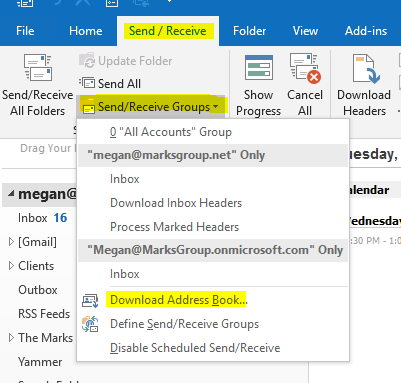

The problem with the showInAddressBook is this attribute is referenced by very old versions of Exchange (which I’m sure people would never be running 😉 ) and is looking for the format of the common name of an object (not what we want). Now some customers may gravitate towards using a different attribute like showInAddressBook. The msDS-cloudExtensionAttribute(s) were introduced in Windows Server 2012 and has 20 different numbers to allow flexibility for these types of scenarios. In this case, we are going to use an attribute called msDS-cloudExtensionAttributeX (where X is the number of the attribute that is free/not being used within your directory).

#Gal not automatically syncing with outlook for mac 2016 how to#
This article will go over how to sync a custom attribute from on-premises to Azure AD to hide a user from the GAL, without the need of extending your Active Directory schema. Or, you can simply create a custom sync rule within Azure AD Connect that flows the value from a different attribute.

Well, you can either extend your Active Directory Schema for Exchange, which is not something that you can easily roll back if something goes wrong and arguably adds a ton of attributes that likely will be never used. The problem though is what happens if you don’t have the msExchHideFromAddressLists attribute in Active Directory? Simply edit the attribute of the user object, set msExchHideFromAddressLists to True, and do a sync. Hiding users from the GAL is fairly straight forward when the user is synchronized from on-premises as well. Set-Mailbox -Identity -HiddenFromAddressListsEnabled $true $Session = New-PSSession -ConfigurationName Microsoft.Exchange -ConnectionUri -Credential $LiveCred -Authentication Basic -AllowRedirection Simply “Hide from address list” from the Exchange Online console or run some quick powershell: $LiveCred = Get-Credential Hiding users from the Global Address List (GAL) is a fairly straight forward when the user is a cloud account.


 0 kommentar(er)
0 kommentar(er)
